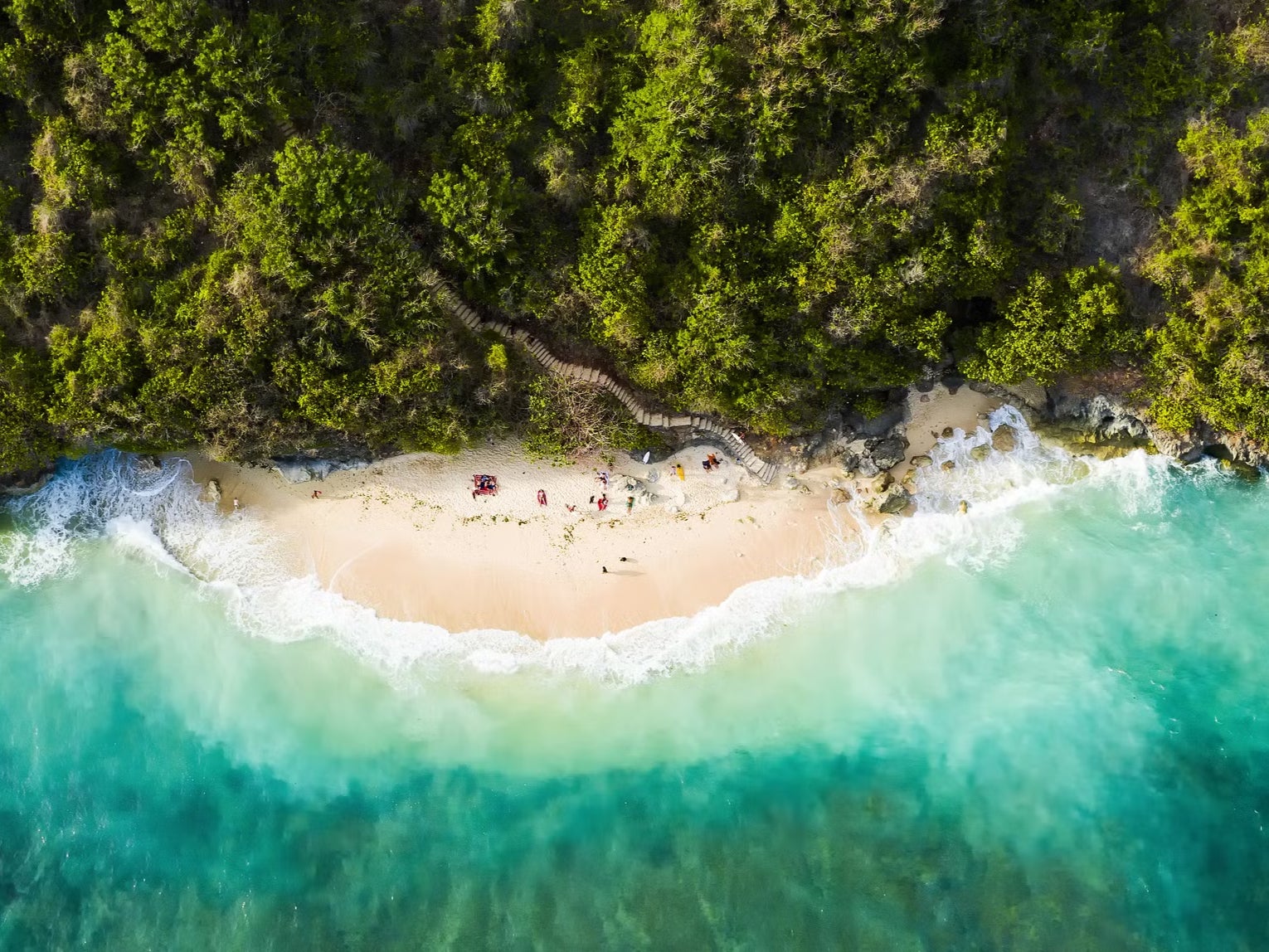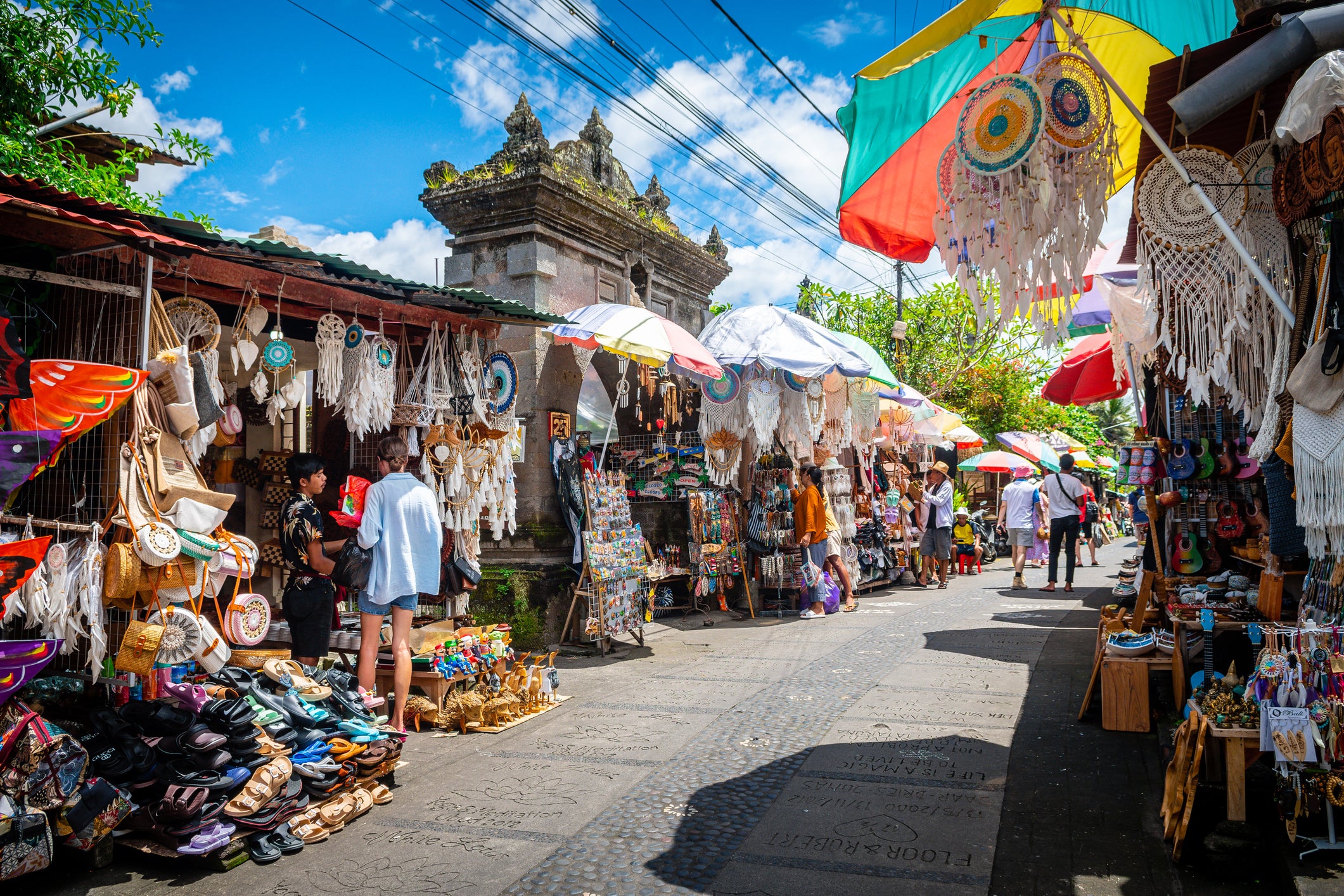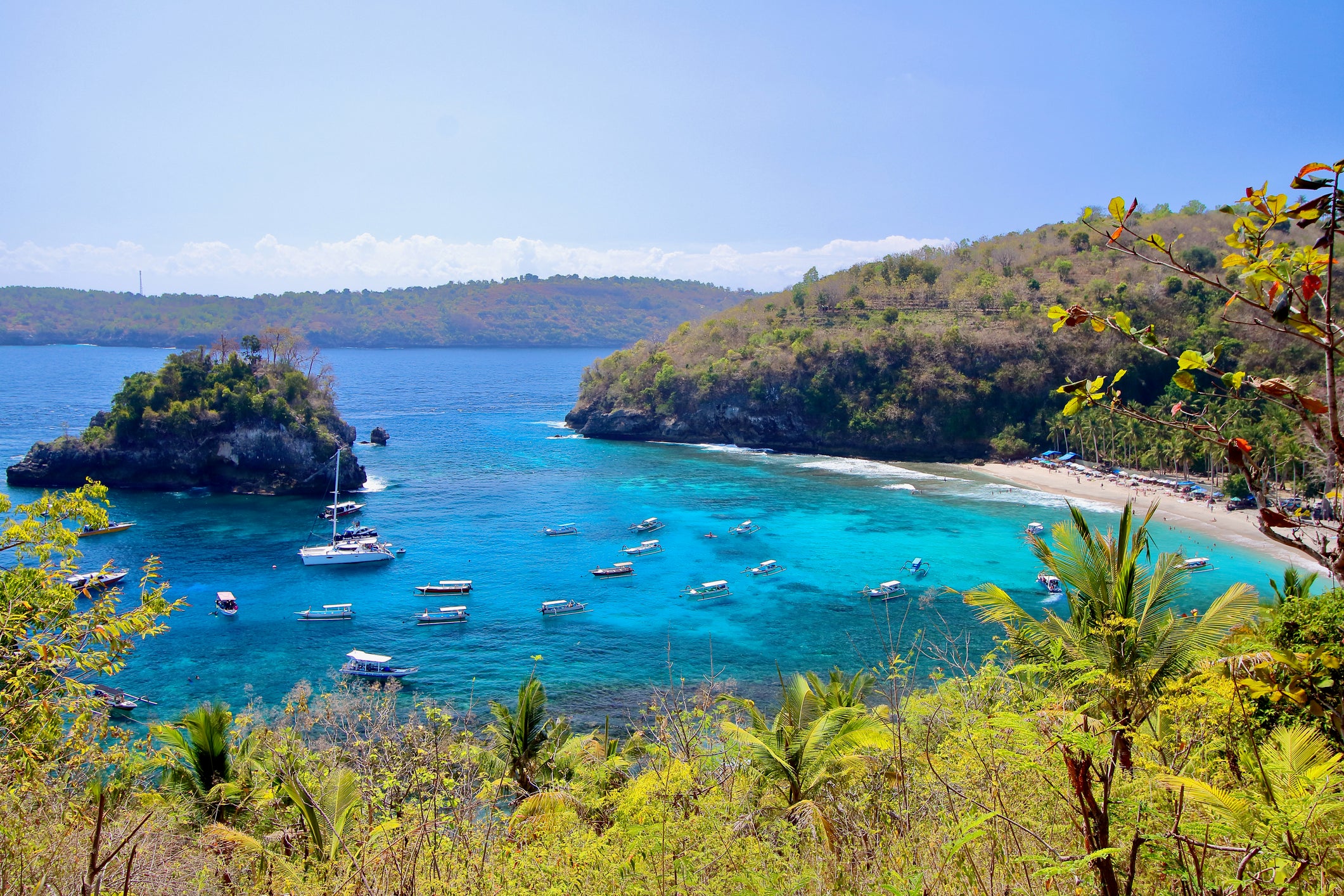Bali travel guide: Everything to know before you go
The ‘Island of the Gods’ remains the benchmark for glorious escapism – here are the best things to do in Bali, from days on the beaches to exploring rice paddies and volcanoes

Your support helps us to tell the story
From reproductive rights to climate change to Big Tech, The Independent is on the ground when the story is developing. Whether it's investigating the financials of Elon Musk's pro-Trump PAC or producing our latest documentary, 'The A Word', which shines a light on the American women fighting for reproductive rights, we know how important it is to parse out the facts from the messaging.
At such a critical moment in US history, we need reporters on the ground. Your donation allows us to keep sending journalists to speak to both sides of the story.
The Independent is trusted by Americans across the entire political spectrum. And unlike many other quality news outlets, we choose not to lock Americans out of our reporting and analysis with paywalls. We believe quality journalism should be available to everyone, paid for by those who can afford it.
Your support makes all the difference.Bali has been a byword for tropical paradise since Charlie Chaplin visited in the 1930s. It’s somewhere that offers all the magazine island cliches: world-class diving, metronomic surf breaks, viridian rice terraces and cliff-top temples, not to mention gorgeous spas and beach clubs.
Like many places, the destination has struggled with overtourism, yet Bali boasts a rich and unique culture, and is a gateway to Indonesia’s 17,000 or so other islands – two solid reasons seek out the island’s serene heart.
Travel restrictions and entry requirements
Entry requirements change often: check them on Welcome Back to Bali. As matters stand, adult travellers should bring paper proof of Covid vaccination (at least two doses) and fill in a customs form online or at the airport. UK and EU nationals need to buy a 30-day visa on arrival either at the airport or online; the cost is 500,000 IDR (£27). You can extend this once for a further 30 days.
Best time to go
Bali’s weather is best during the dry season, which coincides with the European summer and Australian winter, but this is a terrible time to visit. The island’s patchy infrastructure groans at the seams and it can take an hour for a taxi to exit the airport grounds. Shoulder seasons – April to May and September to October – are a better choice. Europeans often struggle with the humidity during the wet season peak in January and February.
Top regions and cities
Ubud
Ubud is Bali’s spiritual and cultural capital. Bali’s ongoing tension between sybaritic and spiritual is evident here: it’s home to both the island’s fanciest fine dining and its best vegan food. Between temples, yoga, arts classes, rice field walks and cycles, Ubud is a wonderful place to recharge, with some spectacular (and some expensive) retreats perched above the gorges north of town.

Seminyak
Seminyak sits between Kuta (incredibly popular with Australians) and Canggu (southeast Asia’s answer to Tulum) along Bali’s west coast. The beaches deliver thermonuclear Indian Ocean sunsets and some of the island’s kindest surf for beginners. The indie fashion boutiques and design stores make for great window shopping, while Eat Street (Petitenget) houses a world-class restaurant scene.
Read more on Asia travel:
Uluwatu
Rapidly developing Uluwatu sprawls along the cliffs of south Bali’s Bukit Peninsula, centred on the cliff-top temple that bears its name and the epic wave that breaks below it. Give knees a workout descending hundreds of steps to hidden beaches through macaque-filled forests – or take the easier option and ride a funicular to a decadent beach club. At sunset, the temple hosts a traditional kecak dance performance.
Sanur
Uncharitably known as “Snore” due to its popularity with retirees, this east coast beach district is Bali’s smartest choice for parents with young children thanks to its flat, current-free waters and villagey pace of life. Stand-up paddleboarding, kayaking, yoga and cycling the lovely beachfront path are draws here.

Amed
Idling along a mellow coast, where swooping hills embrace volcanic sand coves, Amed’s main attractions lie underwater. It’s best known for the USAT Liberty shipwreck, but snorkellers, free divers and scuba junkies will find everything from artificial reefs to dramatic coral walls. It’s also an easy drive from two of east Bali’s star attractions: the Tirta Gangga Water Palace and Lempuyang Temple (known for its “Gates of Heaven”, which frame the sacred Mount Agung volcano).
Best under the radar destinations
Nusa Penida
The largest of a trio of islands perched off Bali’s east coast is popular for day trips but actually merits several days. Hike down rugged cliffs to perfect crescents of sand, dive with manta rays and maybe even sunfish, descend through a barely visible hole into a vast cave temple, or chill out in Crystal Bay or Ped.
Bedugul
An open fire in the tropics? Yes! Bedugul sits at the heart of Bali’s central highlands, so cool and rainy that vendors sell local strawberries by the roadside. A vast botanical garden rolls down to a lake that reflects the beautiful Danu Beratan Temple. It’s a popular stop for day trippers but merits at least an overnight stay.

Menjangan
This island, with its grazing deer and surprisingly temperate-feeling forest, sits within West Bali National Park and offers dramatic views across the narrow strait to Java’s marching line of volcanoes. It’s not possible to overnight on Menjanga, although a boat trip is a must because this is where to find probably Bali’s best snorkelling. A handful of hotels let you stay inside the park and rattle along the forest tracks in modified safari vehicles.
Sidemen
With rice terraces forming natural amphitheatres to showcase Mount Agung, Sidemen feels like the Bali that time forgot, an ideal place to hike, pedal through the rice fields or get stuck into a good book. Tirta Gangga, a former royal palace, is an easy day trip, while the local arak – a traditional alcohol made from fermented rice – is Bali’s best.
Balian
North of the Canggu-Seminyak-Kuta madness of Bali’s west coast, Balian offers two Bali signatures – surfing and yoga – on a ruggedly beautiful volcanic beach set on a tranquil river estuary. Cows still graze amid the guesthouses and hotels on tranquil back streets, and the pace of life harks back to gentler times.

Best things to do
Climb Mount Batur
Bali’s third highest volcano, with a smouldering crater and frozen lava flows, is the island’s signature hike. The sunrise views from the crater rim more than repay starting off in the wee hours; on a good day, you can see the Rinjani volcano on neighbouring Lombok. Boiling eggs for breakfast in the geothermally heated soil is great fun, while hot springs are the perfect salve for tired muscles.
Dive the Liberty Wreck
Indonesia is one of the world’s top scuba destinations. If you fancy breathing underwater, Bali’s coral reefs and warm water are a wonderful place to give it a go. The USAT Liberty, a World War II transport ship, is one of vanishingly few shipwrecks that’s shallow enough for beginners; there’s nothing quite like watching a turtle swim through the porthole of a sunken ship.
Visit the Ubud Writers and Readers Festival
Each October, Ubud hosts the Ubud Writers and Readers Festival, southeast Asia’s top literary festival, bringing local and international fiction and non-fiction talents to the stage and a welter of special events. Speakers have included the likes of Irvine Welsh, Yotam Ottolenghi, and Eka Kurniawan, whose book Man Tiger was the first Indonesian novel nominated for the Man Booker Prize.

Getting around
Bali’s infrastructure can present difficulties. There’s a lack of public transport, roads can get choked, and boat safety varies widely. Ridesharing apps such as Gojek and Grab (but not Uber) fill some of the gaps, with two-wheel and four-wheel taxis on demand. Hiring a private driver for the day – or even the whole holiday – is cost-effective. Companies such as Perama run tourist shuttles between popular destinations. It’s only possible to drive on a UK licence with an International Driving Permit (IDP) issued in Indonesia’s capital, Jakarta, which is 1,200km from Bali. Riding a motorbike without the correct licence for the power of the bike and an Indonesian IDP will invalidate your travel insurance.
How to get there
There’s no sustainable way to get to Bali from the UK. The least-terrible flight route is with Turkish Airlines to Denpasar, with just one stop in Istanbul. Taking a few weeks or even a few months and making Bali one stop on an extended overland trip across Indonesia or southeast Asia spreads the emissions out over a longer period and generally delivers increased economic benefits to locals.
Money-saving tip
Eat like a local a at warung, the small cafes and shops you’ll easily find. A feast of babi guling (Bali’s signature sucking pig dish) with rice, soup, veggies and all the trimmings will cost around 25,000 Indonesia rupiah (£1.50) while a plate of rice with five or so delicious vegan toppings will cost around 15,000 (under £1). Deep-fried stuffed tofu, spicy rujak fruit salad or banana fritters cost pennies from carts.
FAQs
Why won’t my phone work in Bali?
The Indonesian government has barred your phone from accessing data on any SIM, including your UK SIM, because you’re using an Indonesian SIM in a foreign phone and didn’t register your IMEI code on arrival at the airport. All GraPARI outlets can help you sort this out, as can many businesses that sell SIM cards to tourists; in the meantime, you’re reliant on Wi-Fi.
What’s the weather like in Bali?
Bali has a tropical climate with roughly two seasons, wet (generally October–April) and dry (generally May–September); both are hot and humid.
What time zone is Bali in?
Bali is GMT+8. Be aware that Indonesia has three time zones and neighbouring Java, which includes the capital Jakarta, is on GMT+7.
What currency do I need in Bali?
Bali uses the Indonesian rupiah (IDR). ATMs are plentiful but island-wide outages have been known, so keep some cash just in case. Credit cards are accepted more widely than before but for most small purchases cash remains king.
What language is spoken in Bali?
The national language of Indonesia is Indonesian. Bali also has its own language, Balinese, which is not related to Indonesian; traditionally, it’s written using an entirely different script.
Read more on the best hotels in Bali
Join our commenting forum
Join thought-provoking conversations, follow other Independent readers and see their replies
Comments